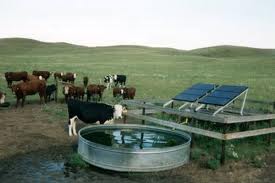Advantages and Disadvantages of Corporation
December 2, 2012Rajasthan Solar Energy Policy – What you want to Know
December 3, 2012Agriculture Industry in India
It is needless to say that the agriculture industry provides the principal means of livelihood for over 58.4% of India’s population. India was known to be the agrarian economy since its independence in 1947 and the sector currently contributes approximately one-sixth of total gross domestic product (GDP).
Agriculture accounts for about 10 per cent of the total export earnings and provides raw material to a large number of industries operating in the different parts of the nation. Since the sector employs maximum amount of population, it is demographically the broadest economic sector and plays a significant role in the overall socio-economic fabric of India.
Facts About Indian Agriculture Industry
As Per 2010 FAO world agriculture statistics, India is known to be the:
- World’s largest producer of many fresh fruits and vegetables, milk, major spices, select fresh meats; select fibrous crops such as jute, several staples such as millets and castor oil seed
- Second largest producer of wheat and rice, the world’s major food staples
- Third largest agriculture-based textile raw materials, roots and tuber crops, pulses
- World’s fifth largest producer of over 80% of agricultural produce items, including many cash crops such as coffee and cotton, in 2010
India has arable land area of 159.7 million hectares which is the second largest in the world after the United States. India has a gross irrigated crop area of 82.6 million hectares (215.6 million acres) which is the largest in the world.
Role of Agriculture in the Indian Economy
It is needless to say that with such huge population base of over 1.2 billion, India is the world’s largest democracy. India has seen a rapid growth in terms of population and is ranked second next to its competitor and neighbor China. The rate at which the Indian population is growing, in no time we will soon cross the China’s population number only to called as the most populous state in the world. Undoubtedly it is true that post 1991 when the economy of India was left open to the world to invite trade and business the country has witnessed accelerated economic growth, and has emerged as a global player with the world’s fourth largest economy in purchasing power parity terms. India also made progress towards achieving most of the Millennium Development Goals and integrated pretty well into the global economy. India’s integration with the global economy was accompanied by the impressive economic growth that has brought significant economic and social benefits to the country. Irrespective of such developments, it is a matter of deep concern that the disparities in income and human development are on the rise.
The economic data revealed that in the year 2009-10 the combined all India poverty rate was 32% compared to 37% in 2004-05 thus signalling slight development in the economy. Going forward, it is essential for India to build a productive, competitive, and diversified agricultural sector and facilitate rural, non-farm entrepreneurship and employment. As already seen that agriculture sector employs the majority of Indian population, and the return in the same is least as compared to the sectors such as Industry or services. Thus it is important that the policies that promote competition in agricultural marketing needs to be implemented as it will ensure farmers receiving better prices. Also it is important that the number of middle men involved in marketing activities for the farmers is lessened and they have proper and direct access to the buyers so as to get high prices for the goods.
Corruption in the sector needs to checked which can only happen if transparency norms are implemented properly and are executed well in time. World Bank’s country overview 2011 stated India’s agricultural economy requires structural changes. It is seen that decades ago from 1970 to recent 2011, the GDP share of agriculture has fallen from 43% to 16% thus making the sector a less preferable sector for the business. Low and volatile growth rates were some of the features of the sector. Escalation of agrarian crisis in several parts of the Indian countryside however imposed a threat not only to national food security, but also to the economic well-being of the nation as a whole. Economic contribution of agriculture to India’s GDP is steadily declining with the country’s broad-based economic growth as it is believed that rapid economic growth in services, industrial output between the year 2000 and 2010 led to such sever fall in the sector.
Now is the time to act for providing the agriculture sector with the right energy and development of infrastructure for proper storage to safeguard the heritage agriculture of India.
Read more about:

